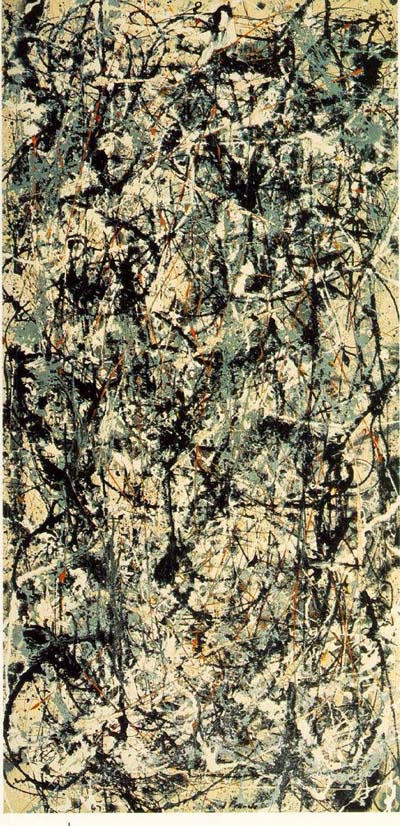Many people don't realise that art isn't just the thoughts in a persons head. They're not just influenced but the artists basic environment, but the whole society they live in. Okay, so I only know the amount of what they teach in high school, or what I can find while doing research tasks, but this topic thoroughly excites me.
Who could say they knew why Leonardo Da Vinci painted the Mona Lisa with a dramatic style of sfumato? Many can speculate, but who would know? This is why I find art history so interesting. There's some sort of wonder, mystery, about the great works from all those great masters. So there may be some art which I personally have never understood, such as Jackson Pollocks 'Cathedral'. The study of it is what I find interesting, often it isn't even the works themselves I find fascinating. It's more the reasons why a person would make such a work and call it art.


(Mona Lisa - da Vinci) (Cathedral - Pollock)
What drove these artists to create two very different works? First, they were influenced by different time periods. Da Vinci was around during the Italian Renaissance, working mostly in Florence and Rome, whereas Pollock worked during the period of American abstract expressionism, working mostly in Long Island. Both time periods had very different ideas ingrained in their societies.
Humanism and Neo-Platonism were what influenced the culture of Da Vinci's time. Existentialism was the main influence for Pollock. When first reading any of this, if you haven't heard the terms before, it may just seem like gibberish, but really most of the ideas are simple. Most of these ideas which influence art are simply a way in which people aim to understand the world.
The difference in style and technique also differs because of where an artist works. Italy was already a highly developed, old society by the time Da Vinci came around. However, America was still fairly young by the time of Pollock. It's this difference which can be extremely important. Italy already knew its place in the world, where America was still trying to find it. This means that Americans were trying to make a name for themselves, attempting to be identified as separate to the societies in Europe. One way in which to separate themselves was to develop a differing style of art, hence the contrast of technique.
There's always hundreds of influences on art, each one being unique to the time and artist. It would take years to identify and analyse each individual context. For this reason, most historians seem to stick to the major influences, the more obvious ones. Personally, I've found that when you know even a little about an influence on a piece of work, it's far more interesting. Rather than just being a pretty image on the wall, it's a mix of different aspects of psychology.
It becomes even more exciting when you get to see one of the works that you've been studying. I had this privilegde when I went to see an art exibition in Te Papa, one of the museums in Wellington. The European Masters exibition came to New Zealand and it was put on my must do list. Not only did it make me able to say that I've seen a real life Picasso (which it did), I also got to see works which I'd studied earlier that year in school. I was more than extatic when I realised I'd see works I knew.
I became my sisters walking encyclopedia, spouting out facts about the works and movements we were seeing. When offered an audio encyclopedia for hire, she put her arm around my shoulders saying, 'I've got mine right here'. It made the experiance not only exciting because of my interest in the works, but another way for my sister and I to develop our relationship.
For the rest of that day I was bubbly, on a slight high from wonder. Seeing the works over a power point did them no justice. I was unable to see the depth of the style, the line in which the artist formed his figures. The works weren't only a picture, they were a whole other world that I could get lost in for hours that I unfortunatly did not have. Degas' obsession over dancers could draw one in. His passion for the subject was tangible on the canvas. Almost as if he'd spent his whole life in that one moment.
I would tell anyone going to see art to do their research. It makes the experiance more... full. I could talk for hours about art, whatever the sort. Maybe, hopefully, I'll be able to instill a passion in at least on person, or maybe even an interest to know that little bit more.
No comments:
Post a Comment